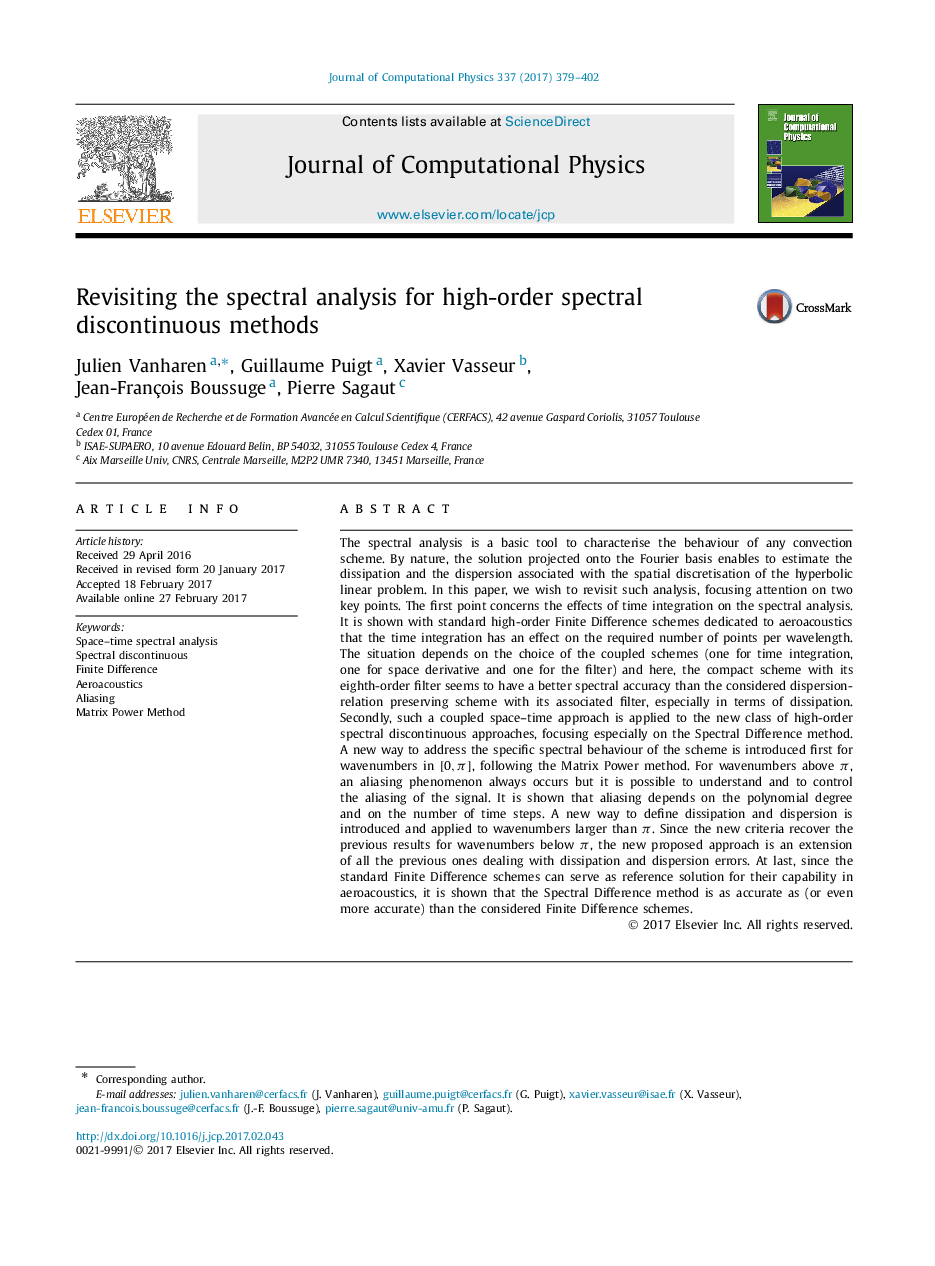| کد مقاله | کد نشریه | سال انتشار | مقاله انگلیسی | نسخه تمام متن |
|---|---|---|---|---|
| 4967734 | 1449376 | 2017 | 24 صفحه PDF | دانلود رایگان |
عنوان انگلیسی مقاله ISI
Revisiting the spectral analysis for high-order spectral discontinuous methods
ترجمه فارسی عنوان
بازبینی تحلیل طیفی برای روشهای متداول طیفی مرتبه بالا
دانلود مقاله + سفارش ترجمه
دانلود مقاله ISI انگلیسی
رایگان برای ایرانیان
موضوعات مرتبط
مهندسی و علوم پایه
مهندسی کامپیوتر
نرم افزارهای علوم کامپیوتر
چکیده انگلیسی
The spectral analysis is a basic tool to characterise the behaviour of any convection scheme. By nature, the solution projected onto the Fourier basis enables to estimate the dissipation and the dispersion associated with the spatial discretisation of the hyperbolic linear problem. In this paper, we wish to revisit such analysis, focusing attention on two key points. The first point concerns the effects of time integration on the spectral analysis. It is shown with standard high-order Finite Difference schemes dedicated to aeroacoustics that the time integration has an effect on the required number of points per wavelength. The situation depends on the choice of the coupled schemes (one for time integration, one for space derivative and one for the filter) and here, the compact scheme with its eighth-order filter seems to have a better spectral accuracy than the considered dispersion-relation preserving scheme with its associated filter, especially in terms of dissipation. Secondly, such a coupled space-time approach is applied to the new class of high-order spectral discontinuous approaches, focusing especially on the Spectral Difference method. A new way to address the specific spectral behaviour of the scheme is introduced first for wavenumbers in [0,Ï], following the Matrix Power method. For wavenumbers above Ï, an aliasing phenomenon always occurs but it is possible to understand and to control the aliasing of the signal. It is shown that aliasing depends on the polynomial degree and on the number of time steps. A new way to define dissipation and dispersion is introduced and applied to wavenumbers larger than Ï. Since the new criteria recover the previous results for wavenumbers below Ï, the new proposed approach is an extension of all the previous ones dealing with dissipation and dispersion errors. At last, since the standard Finite Difference schemes can serve as reference solution for their capability in aeroacoustics, it is shown that the Spectral Difference method is as accurate as (or even more accurate) than the considered Finite Difference schemes.
ناشر
Database: Elsevier - ScienceDirect (ساینس دایرکت)
Journal: Journal of Computational Physics - Volume 337, 15 May 2017, Pages 379-402
Journal: Journal of Computational Physics - Volume 337, 15 May 2017, Pages 379-402
نویسندگان
Julien Vanharen, Guillaume Puigt, Xavier Vasseur, Jean-François Boussuge, Pierre Sagaut,
